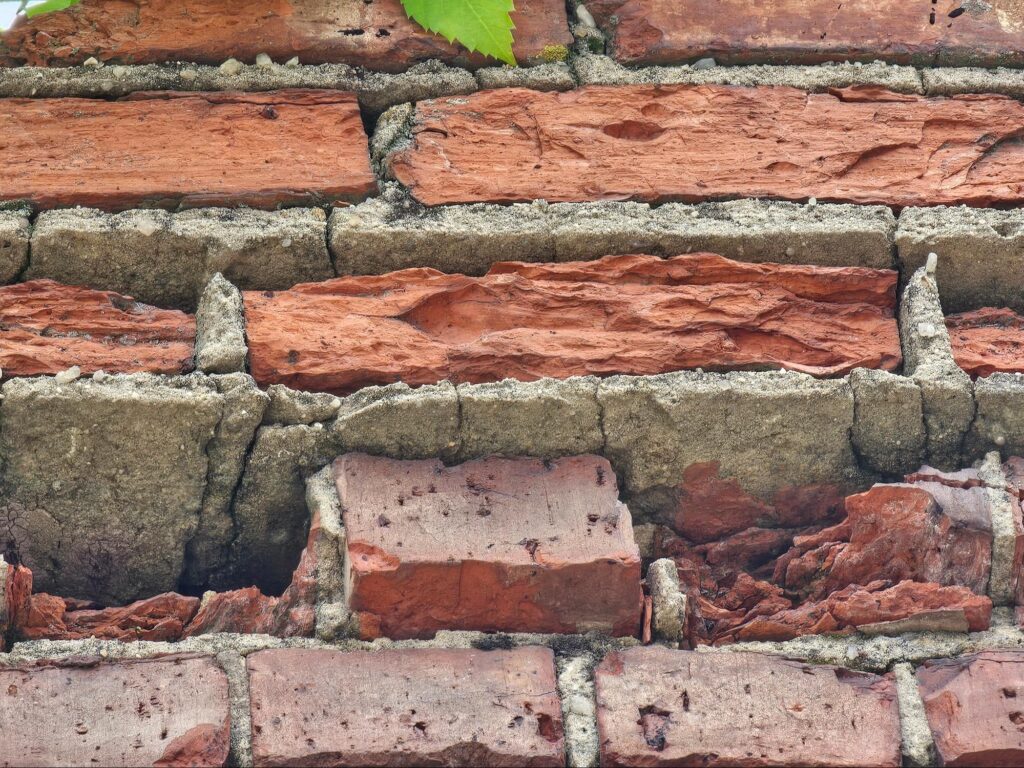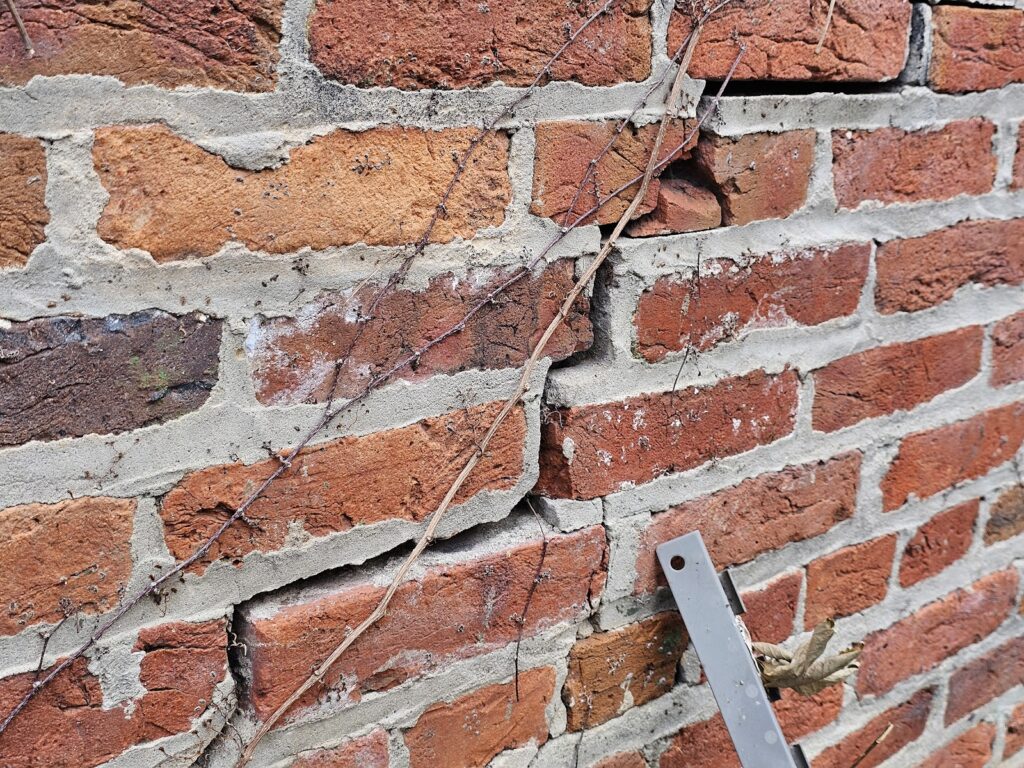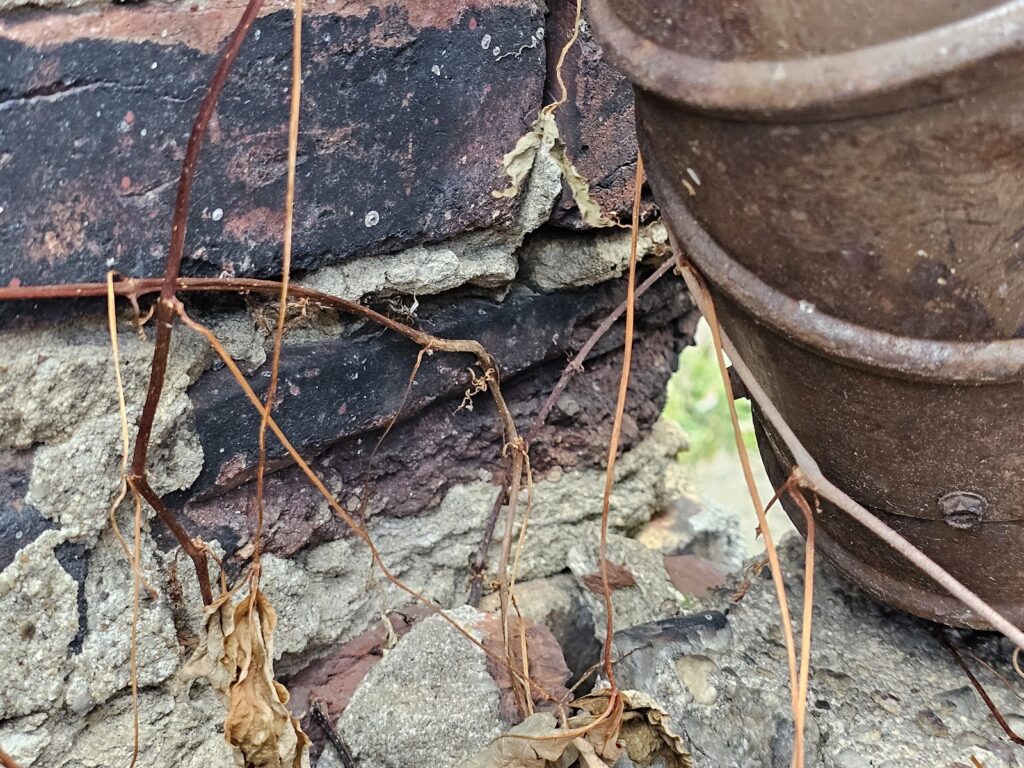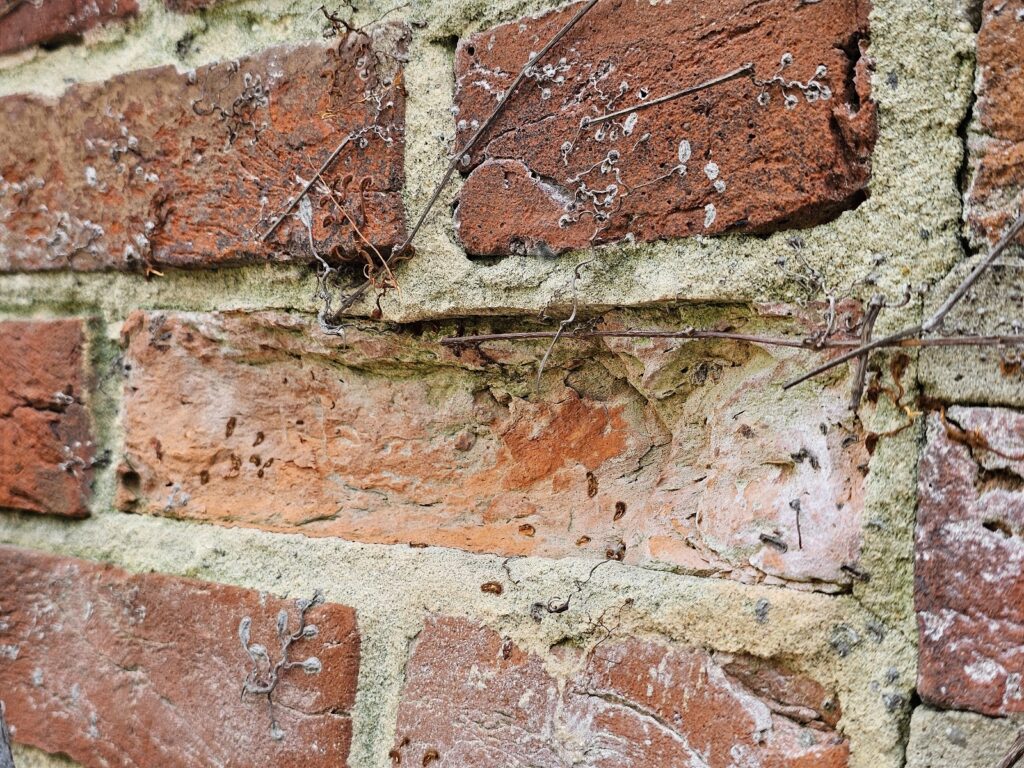In this past week, we took a look at four of the main physical mechanisms of masonry deterioration related to overhydration.
The list of those four areas follows below:
- Increased pore water pressure within the bricks
- Dissolution and transportation of soluble salts
- Freeze-thaw cycles amplified by high moisture content
- Chemical reactions between water and brick/mortar components
Today, we pick up with item number three, as we already looked at items number one and two in last week’s blog.
3. Freeze-thaw cycles amplified by high moisture content:
When water-saturated masonry is exposed to temperatures below freezing, the liquid water in the pores transitions to ice. This common phase change, from liquid water to ices, is accompanied by an approximately 9% volume expansion. In the cases of the pictures here in this blog article, we are looking at these masonry walls and water trails in the summer months of the year, particularly most of these pictures were taking during our condition surveys in the field in May and June of 2024. But, it should be understood that if these areas are becoming over-hydrated in the summer months, the exact same thing is happening in the winter months of the year.
The picture below shows one of the most extreme examples, that we have seen of prolific spalling. The motor has almost entirely remained intact, to a death Way Beyond what could be considered a typical deck depth of brick-repointing. This issue is not a matter of repointing with improper, overly hard, modern mortars. Although it’s counterintuitive, this area of extreme deterioration is actually built with both original brick and mortar.

In a confined space like a pore, this expansion generates hydraulic pressures governed by poromechanics principles. The magnitude of the pressure depends on factors such as the degree of saturation, pore size distribution, and the rate of freezing. The concern about freeze-thaw damage is elevated in historic masonry facades and structures because historic masonry generally has a much higher degree of porosity.
The study of fluid-filled porous substances falls under the domain of poromechanics, a specialized field within physics that combines elements of continuum mechanics. The discipline examines how materials composed of a solid framework, referred to as a material matrix, behave when permeated by an intricate system of interconnected voids or cavities that are saturated with fluid. Such materials, referred to as porous media or porous materials, consist of a solid structure interwoven with a network of fluid-filled spaces. Although it might seem counterintuitive at first, brick masonry is actually a porous material. Poromechanics examines the interactions between the solid matrix and the fluid within these interconnected pores, and how these interactions influence the overall behavior of the material.
The damage mechanism, related to freeze-thaw cycles, is multifaceted and involves several possible conditions: a) Direct hydraulic pressure from the expanding ice. b) Migration of unfrozen water to the freezing sites (cryosuction), driven by chemical potential differences, leading to the growth of ice lenses. (Ice accumulation like this can have incredible force to break and move masonry.) c) Differing thermal expansion coefficients between ice and the surrounding brick material, causing shear stresses at the interfaces.
These stresses can cause progressive damage with repeated freeze-thaw cycles, a process known as frost weathering. The natural presence of dissolved salts further complicates the situation by depressing the freezing point (colligative property) and potentially leading to salt crystallization upon freeze concentration.

All of these different mechanisms of potential deterioration can cause the destruction and accelerated destruction of historic masonry facades. It’s important to maintain these buildings and building facades to minimize water infiltration, both in the design to divert water away from facade surfaces but also to maintain an upkeep these elements to avoid slow deterioration that compounds and expands exponentially over time.
4. Chemical reactions between water and brick/mortar components:
Water, even in non-freezing states, also facilitates various chemical reactions within the masonry system, many of which are detrimental to its durability. These reactions often involve the deterioration of mortar components, particularly in the case of hydraulic lime or Portland cement mortars, but can also affect the bricks themselves.
In mortars, one primary concern is the leaching of calcium hydroxide (portlandite, Ca(OH)2) from the cement paste. This highly alkaline compound is soluble in water (Ksp ≈ 5.5 × 10^-6 at 25°C) and can be transported through the pore network. When it reaches the surface and is exposed to atmospheric carbon dioxide, it undergoes carbonation: Ca(OH)2 + CO2 → CaCO3 + H2O. While the resulting calcium carbonate is less soluble, the reaction changes the pH of the system and can lead to shrinkage and microcracking.
For bricks fired at lower temperatures or those containing residual clay minerals, prolonged water exposure can lead to hydration reactions. For example, anhydrous calcium aluminates might hydrate to form expansive products like ettringite (Ca6Al2(SO4)3(OH)12·26H2O) or calcium aluminate hydrates. These reactions involve significant volume changes and can cause internal stresses.

Moreover, water can mediate harmful reactions between incompatible materials in the masonry assembly. A classic example is the alkali-silica reaction (ASR), where alkaline pore solutions react with amorphous or poorly crystalline silica in aggregates or bricks. The product is a hygroscopic alkali-silica gel that swells upon water absorption, leading to expansive pressures and cracking.
Lastly, the presence of water lowers the activation energy for many degradation reactions by facilitating ion transport and acting as a reactant. This catalytic effect accelerates processes such as sulfate attack, where sulfate ions react with calcium aluminate hydrates to form ettringite, or the oxidation of iron-bearing minerals in the bricks, leading to unsightly rust stains and potential spalling.

In summary, the overhydration of masonry leads to a complex interplay of physical and chemical processes, each governed by fundamental scientific principles from thermodynamics, kinetics, transport phenomena, and materials science. The resulting damage is often synergistic, with one mechanism exacerbating another, underscoring the root importance of moisture control in preserving masonry structures.
Again, we mentioned, any interventions or treatments for historic masonry should be done with care and under the guidance of experienced professionals, like our company, to ensure the preservation of the building’s historic integrity. Our company can help.
You can reach us by telephone at (202) 796-7644 and you can reach us by email from the contact form on our website at https://duponttuckpointingmasonrydc.com/contact-us/.




